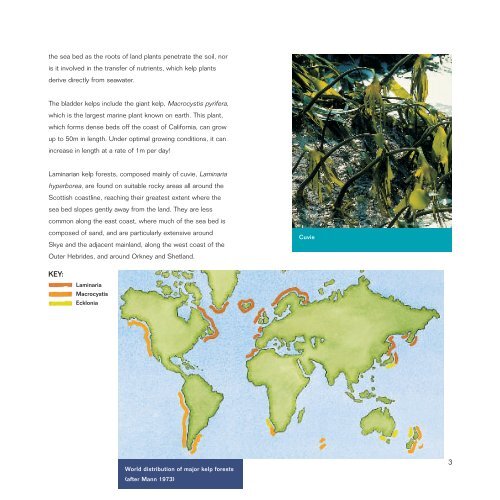Kelp Forests - Scottish Natural Heritage
Kelp Forests - Scottish Natural Heritage
Kelp Forests - Scottish Natural Heritage
You also want an ePaper? Increase the reach of your titles
YUMPU automatically turns print PDFs into web optimized ePapers that Google loves.
the sea bed as the roots of land plants penetrate the soil, nor<br />
is it involved in the transfer of nutrients, which kelp plants<br />
derive directly from seawater.<br />
The bladder kelps include the giant kelp, Macrocystis pyrifera,<br />
which is the largest marine plant known on earth. This plant,<br />
which forms dense beds off the coast of California, can grow<br />
up to 50m in length. Under optimal growing conditions, it can<br />
increase in length at a rate of 1m per day!<br />
Laminarian kelp forests, composed mainly of cuvie, Laminaria<br />
hyperborea, are found on suitable rocky areas all around the<br />
<strong>Scottish</strong> coastline, reaching their greatest extent where the<br />
sea bed slopes gently away from the land. They are less<br />
common along the east coast, where much of the sea bed is<br />
composed of sand, and are particularly extensive around<br />
Skye and the adjacent mainland, along the west coast of the<br />
Outer Hebrides, and around Orkney and Shetland.<br />
KEY:<br />
Laminaria<br />
Macrocystis<br />
Ecklonia<br />
World distribution of major kelp forests<br />
(after Mann 1973)<br />
Cuvie<br />
3

















